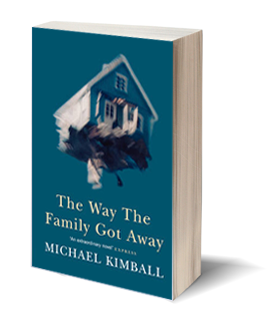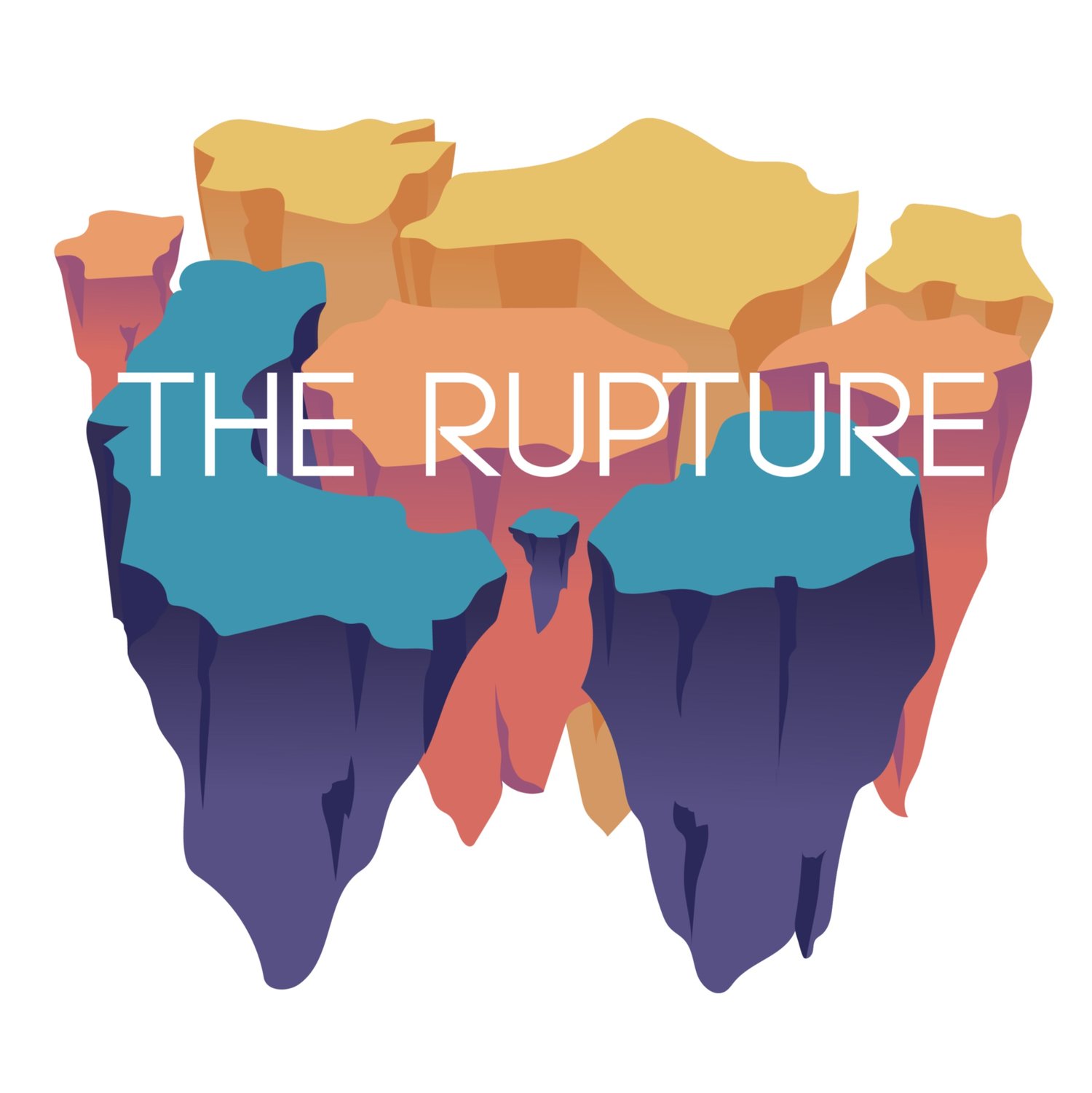The Way the Family Got AwayBy Michael Kimball |
 |
|---|
Reviewed by John Madera
Sometimes a list will leave you listless: Cradle and other baby stuff, necklaces and other dress-up stuff, doll house and the doll people living in it, pocketwatch and pocketknife, baseball bat and baseball glove, pillows, blankets, sheets, and the other stuff that helped them sleep, locket and chain, family pictures, guns, holster belt, bullets, wedding dress, wedding ring, record player and records, silver frame with the picture of their whole family in it, suitcases, boxes, and crates, maps and their other car papers, flashlight, a pair of sunglasses, batteries, sewing kit, first-aid kit, gloves, spare tire, hubcaps, tire jack, lug wrench, backseat, rearview mirror, and some other tools that were in the trunk. Actually, this was everything a family had until they had to let all of it go, things they sold to buy some more distance, some more space, to get them further away and to keep them together, to keep them from breaking further apart. In the end they lose everything except for the “underwear and the shoes, the doll parts, [their] dirty clothes, and some other stuff that nobody else ever wanted but [them].”
Michael Kimball’s The Way the Family Got Away is about everything that disappears, like what you used to call a dream, like so much sump. Here a family of four travels cross-country away from unfathomable loss toward somewhere they hope is filled with something else, anything but the pain of that loss. They travel away from Mineola, Texas toward Gaylord, Michigan, or, as the brother says, “away from where my brother was alive once and died there and toward the miles and the everything else that was going to happen to us everywhere else we went.” The boy thinks that they stop at the homes of other families so that they “could get some of their family away from them and keep going away,” as if the idea of family is a tangible thing, that the invisible bonds that make a family a family can be traded off and then used to keep another family together, to keep them going, keep them moving.
Here are the voices of children, offering images as clear as they are clouded from inexperience, illuminated as they are shadowed by pain. The Way the Family Got Away ping-pongs between a little girl and her older brother recounting what has happened, is happening, and what might happen during their travels. The sister drifts easily between her own fantastic doll-world and people-world, where “[y]ou have to keep your doll-you with you or there won’t be a living-world for people or dolls or my little brother to live inside it anymore.” This little girl’s voice will indelibly inscribe itself on your heart as she struggles to make sense of the death of her baby brother. Fantasy and reality are the same for her, and this blurring of boundaries may be her salvation. “We make each other up anyway,” she says. “We are made up out of other people and the living-world. But we also die from each other and go back down into the ground and dirt-world after we burn and poke and break and the people goes out of us.”
Kimball suggests that families may be tethered as much by their shared history as they are by their possessions, their home, their property, treasures, keepsakes, family photos, or, more precisely, their notions of same. But what happens when all that is stripped away? What happens when a fire burns it all down to so much charcoal? When a flood washes it all away? Or, as in Kimball’s novel, what happens when a baby dies and everything gets swallowed into that yawning maw, that “black hole with teeth”? Here a boy maps out their mourning:
We got farther away by trading everything else we had left with us or inside us away to everybody else that lived in everywhere we went. We were going to empty everything out of our family and empty everything out of everybody in our family. We got emptier the farther away that we went away together. We drove away past empty places—ditches along the side of the road, houses without any windows or doors, barns without roofs, fields without any trees or anything else growing up in them. We got out to where my mother and father and brother and sister and me only had miles and towns and the everywhere that we went away to together inside us. It was this emptiness and distance in between these places and us that held our family together in America.
As readers, we often hope that the lover will return, that the reward will come, that the treasure will be found, that there will be respite, that everything will come together in the end. The Way the Family Got Away offers no such easy answers, nor any evidence of the resilience of family to overcome any obstacle, recover from any tragedy. In this short but weighty novel, Kimball offers just what the title says: this is the way the family got away. From town to town, they get farther from where they were but no closer to restoring what they had lost. They are a nameless family, a family in name only, running from their pain only to find it seeping out of them, stinking like so much stagnant water. Though the boy says, “A family needs people in it to keep going or it stops being a family,” what makes a family a family is what these children are forced to figure out for themselves since their mother and father—reduced to husks—shoulder their own guilt, simply slogging ahead to get their children to some kind of safety.
While the brother offers mainly detached accounts of their travels, providing inventories of what was sold, and how that enabled them to get to another place on their map toward Bompa’s house, the sister relates something more blisteringly imaginative, grotesque and gothic. In “How to Make a Baby Up, How to Make Me Up Into a Momma, and How Many People Any People-Family Needs to Have Living Inside It,” the brother and sister put their dead-brother’s “baby-things inside the hole inside” the sister to “make a baby up and make [her] into a Momma too.” After a series of regressive acts like some kind of makeshift play therapy, they enact their own birth:
We held my hands over my nose and mouth to hold my breath inside me and my stomach out. We pushed my stomach from behind me to make me up into more baby and bigger out. We cut me and my clothes open to get the baby out of me and blood. But our baby only came out doll-baby. It wasn’t crying or talking or eating and angel or folded up and paper or big enough either. It wasn’t alive or living. Our doll-baby was bloody with my Momma and string.
There’s something about a sad story told from a child’s perspective that makes it all the more poignant. It may be the unadorned flow of this follows that and then this happened. It may be the crystal clear imagery. It may be the guileless naïveté that misinterprets motivations and consequences. In The Way the Family Got Away, the children have a somewhat stoic perspective of the unfolding events borne from years of disenfranchisement and life’s incessant pummeling, and from mirroring their parents’ detached coping mechanisms. Kimball wants us to learn, like the little girl has learned, a new syntax of bereavement, where “you don’t only always hear everything inside your ears. Sometimes you hear some things inside your head and mouth or stomach. You feel it inside you and you can’t stop it from going inside your head.” And if you listen closely, you might just hear something you haven’t heard in a way you haven’t heard, or hear something you don’t want to hear in a way you should, or hear something you have heard in a way you have heard, but haven’t understood.
